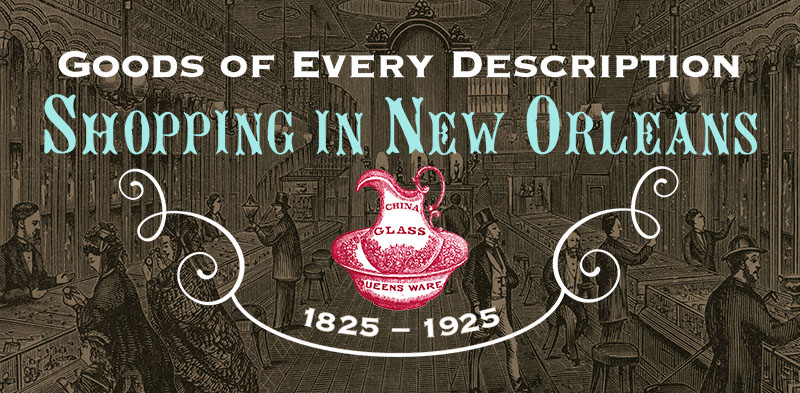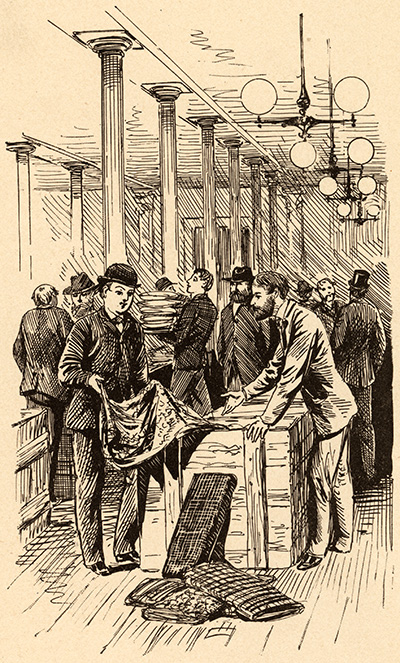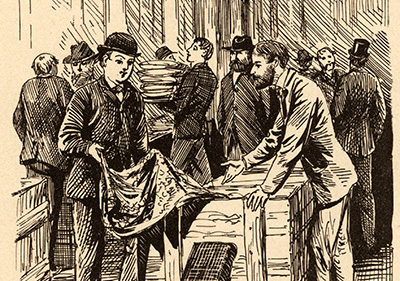


The streets of old New Orleans, like the streets today, were lined with shopwindows, offering glimpses of fashionable goods for sale from around the world. Swaths of textiles, crates of ceramics, parlor suites, elaborate silver services, and dressed mannequins on display were models of style that customers aspired to copy in their own homes.
The size and purpose of shopwindows gradually expanded over the course of the nineteenth century. Initially, narrow windows provided light and limited display space for craftsmen and direct importers. Silversmiths in the French Quarter displayed their handmade goods next to pieces they purchased on trips to Europe and the Northeast. Early china importers on Chartres and Canal Streets filled their windows with colorful transfer-printed earthenware and sleek porcelain dishes that had just arrived on ships from New York City; Staffordshire, England; and Le Havre, France.

By mid-century, blocks of windows on Royal Street looked in on furniture stores. Light reflected from huge pier mirrors, silk curtains, and polished rosewood and mahogany furniture. Upholstery fabrics, mirrors, and miscellaneous “fancy goods” were sold to accompany elaborate and highly ornamented furniture in the latest Victorian styles.
After the Civil War, large plate glass shopwindows along Canal Street were dedicated to glittering luxuries. Local newspapers reported on the diamond jewelry, marble statues, regulated clocks, patented pistols, and specialty china and silver services that filled the best windows. Retailers competed with one another to have the most impressive objects on display. When one jeweler displayed a miniature fire engine as a prize for a local fair, another made a true-to-life, silver-and-gold model of one of the mule-drawn streetcars that traveled up and down Canal Street.
At the turn of the twentieth century, large department stores became the anchors of the shopping district on Canal Street. They created lifelike tableaus in their windows, complete with mannequins, foliage, and taxidermy animals. Illuminated by electricity instead of sunlight, these windows illustrated the life of luxury that was becoming increasingly affordable. The shopwindows of New Orleans, then as now, were designed to spark viewers’ imaginations and encourage them to open their purses.
Begin Viewing Exhibition »

